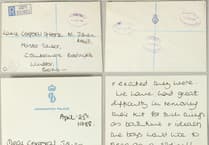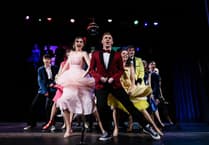A large audience at St Christopher’s Church in Haslemere were treated to an entrancing HHH Concert when the prominent young duo, cellist Indira Grier and pianist Daniel Lebhardt, performed cello sonatas by Beethoven and Brahms. Both are winners of international prizes and have performed with prestigious orchestras and conductors worldwide.
The concert on Saturday, February 25 began with Beethoven’s 2nd Cello Sonata in G minor. This key had been Mozart’s favourite for expressing sadness and in the opening slow movement the piano explores alternative rhythms – a pensive skipping down stairs, a spinning wheel – while the cello seeks out wistful legato themes. As the key modulates to E flat major the instruments exchange motifs and rhythms, and long pauses emphasise its thoughtfulness. The following G major Rondo rattled along, lifting the mood and leading to a crisp finish.
This work was written on a visit to Berlin in 1796, where the youthful Beethoven received the gift of a snuffbox filled with Louis d’Ors from the King of Prussia and completely new insights into the cello’s potential from the King’s treasured cellist, Jean-Louis Duport.
The next item in the concert was Beethoven’s 3rd cello sonata, though the world had had to wait another 12 years for this. Written at a time when, despite the personal disaster of his growing deafness, Beethoven was creating many heroic works like the 5th symphony, the 3rd sonata typifies the surprising confidence and optimism of his ‘Middle Period’. It opens with a lovely questioning melody on the cello, to which the piano replies with a serene variation on the theme. The exchanges become robust, even passionate, but these dialogues characterise the whole piece, from the “gruff humour” of the following scherzo to the sweet consolation of the final allegro.
After the interval, the duo performed Brahms’ 1st cello sonata. This rather sombre, E minor piece was dedicated to the amateur cellist, Josef Gänsbacher.
During a run-through with the composer, the hapless dedicatee complained the piano was so loud he could not hear himself play. “Lucky you!” Brahms retorted and continued thundering away at the keyboard.
He was not going to be a junior partner and, like Beethoven, he published it as Sonata for Piano with Violoncello. The piece has a nostalgic feel, looking back to baroque and classic traditions. The first movement is in sonata form and opens with a noble melody in the cello against crochet chords played on the offbeat by the piano. Instead of the expected scherzo, the middle movement is a retro “quasi minuet and trio”, and yet the trio itself is frankly romantic and reminiscent of a Chopin nocturne.
The final movement is fugato – here the instruments exchanged fugal motifs of increasing complexity and both players executed huge leaps with great aplomb before the final sprint of the piu presto cadenza.
This evening of warm, accessible music making was rapturously received and made a rewarding introduction to the development of the cello sonata.
Martin Robson



